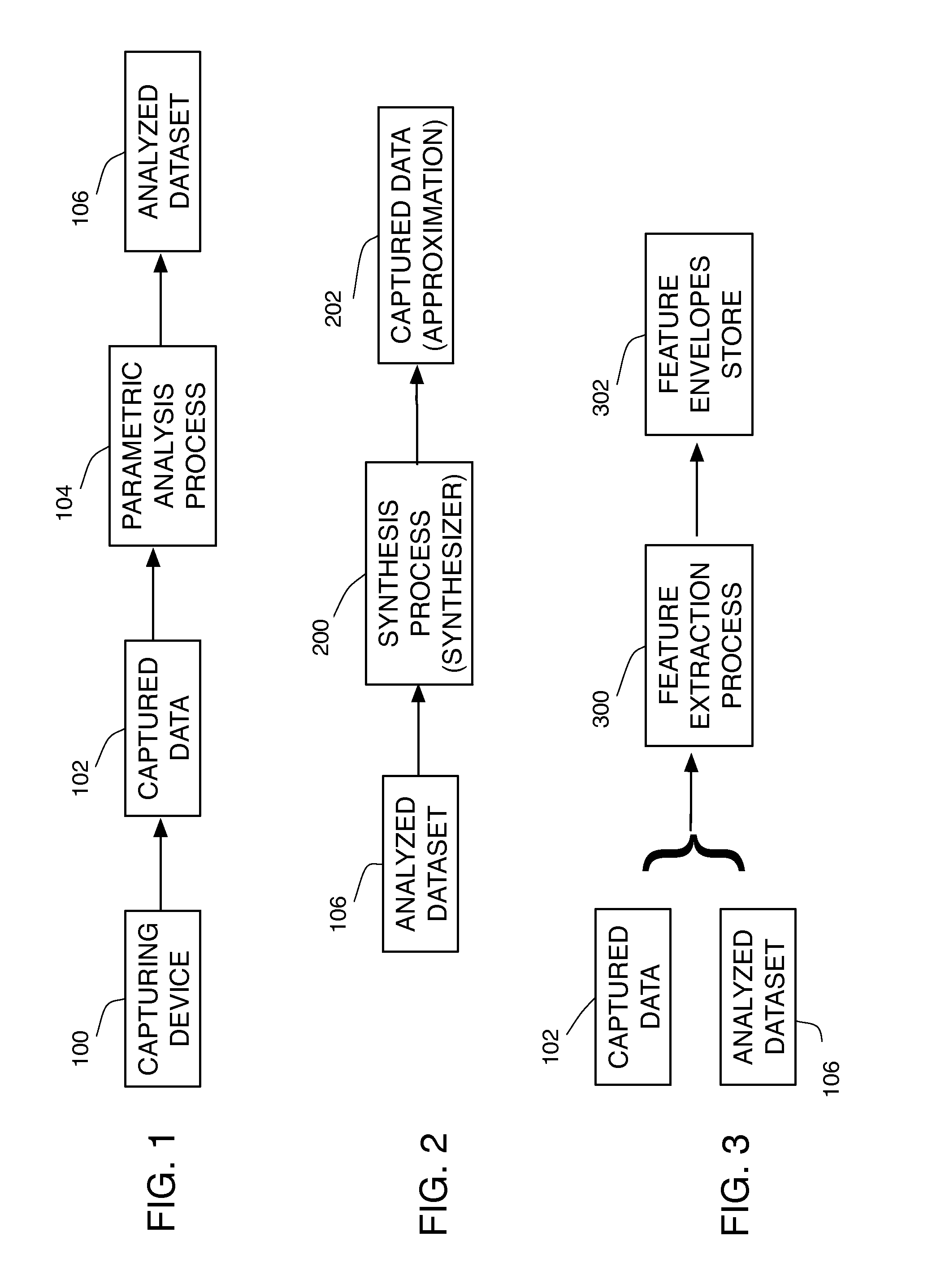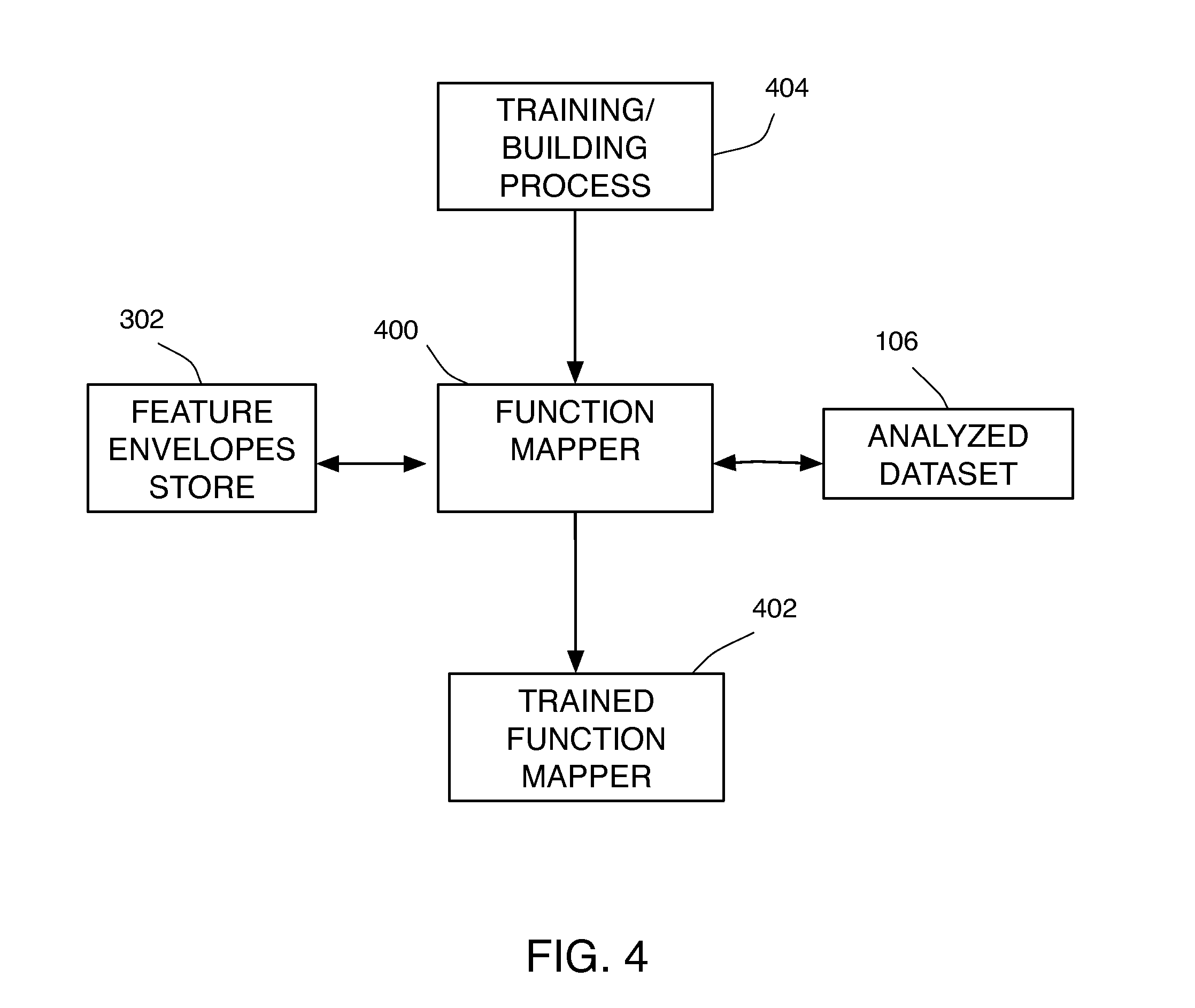Dynamic data structures for data-driven modeling
a data structure and data technology, applied in the field of computing, can solve problems such as problems such as the inability to produce perceptual non-natural data, the inability to preserve natural correlations, and the inability to produce natural data
- Summary
- Abstract
- Description
- Claims
- Application Information
AI Technical Summary
Benefits of technology
Problems solved by technology
Method used
Image
Examples
example audio embodiments
[0158]FIGS. 16, 17 and 18 present embodiments directed to audio applications in correspondence to FIGS. 1, 2 and 3 described above for generally applicable embodiments. FIGS. 19 and 20 show characteristic analysed dataset frames amplitude plots as a function of frequency.
[0159]FIG. 16 illustrates a parametric analysis process performed on recorded audio sample from an audio sample store 1602 to obtain an analyzed dataset 1606 (or synthesis parameters set). In accordance with one embodiment, the data to be modeled are monophonic audio recordings such as instruments like flute, saxophone, singing voice or other sounds such as animal sounds, sound effects, and the like. Such samples can be captured using a microphone and an audio recording device 1600, or by any other mean such as recorded from the output of another synthesis process.
[0160]The audio samples are then passed to an SMS-type parametric analysis process 1604 based on Spectral Modeling Synthesis (SMS). The result of the SMS-...
example audio embodiment # 1
Example Audio Embodiment #1
[0192]FIG. 34 illustrates the training stage of audio embodiment #1 including a combination of two or more segments at the function mapper's input level. First, two or more sounds (e.g., two babies crying) are recorded are captured audio data with a capturing or recording device 1600 and joined in a single audio sample store 1602 (e.g., as a Waveform Audio File Format (WAV) file). Next perform parametric SMS analysis 1604 of the WAV file to obtain an analyzed dataset 1606 of all the sounds. Next perform audio feature extraction 1800 on all sounds to extract pitch and loudness envelopes for instance. Next perform segmentation and categorization process 3008 on all envelope feature sets to obtain categorized (or labeled, or annotated) feature envelopes store 3006. Categorization here can consist in assigning one value for silence regions, and a different value for non-silent regions. Automatic silence detection algorithms are common in the field and can be u...
example audio embodiment # 2
Example Audio Embodiment #2
[0197]FIG. 36 illustrates the training stage of audio embodiment #2 including a combination of two or more segments at the function mapper's body level. In FIG. 36 feature envelopes from two different audio segments 3600A, 3600B are combined (or joined) using a discriminant input to provide combined feature envelopes with one or more discriminants 3602. Discriminants can be manually assigned using a graphical editor for instance. Alternatively, some features can be used as natural discriminant. For example, formants 1 and 2 can serve to perceptually discriminate between two vowels. Therefore formant envelopes extracted automatically according to techniques known in the field can also be used as discriminants. In the example illustrated in FIG. 36, the discriminant value is used as an “inverse classifier” value to generate data patterns.
[0198]FIG. 37 illustrates a combination of analyzed datasets in the same training set. According to one embodiment, the an...
PUM
 Login to View More
Login to View More Abstract
Description
Claims
Application Information
 Login to View More
Login to View More - R&D
- Intellectual Property
- Life Sciences
- Materials
- Tech Scout
- Unparalleled Data Quality
- Higher Quality Content
- 60% Fewer Hallucinations
Browse by: Latest US Patents, China's latest patents, Technical Efficacy Thesaurus, Application Domain, Technology Topic, Popular Technical Reports.
© 2025 PatSnap. All rights reserved.Legal|Privacy policy|Modern Slavery Act Transparency Statement|Sitemap|About US| Contact US: help@patsnap.com



